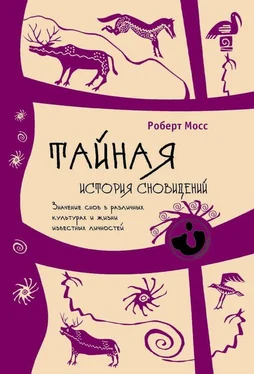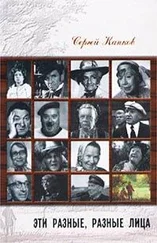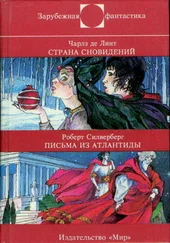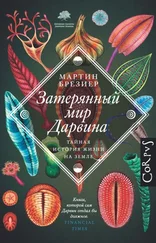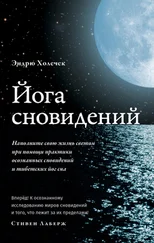[54] Bregman, Synesius , pp. 66–72.
[55] E. R. Dodds, Pagan and Christian in an Age of Anxiety: Some Aspects of Religious Experience from Marcus Aurelius to Constantine (Cambridge: Cambridge University Press, 1965), p. 67.
[56] Амвросий, Послание 51, цит. автором по: Isabel Moreira, Dreams, Visions, and Spiritual Authority , p. 16.
[57] Moreira, Dreams, Visions, and Spiritual Authority ; Peter Brown, The Making of Late Antiquity (Cambridge, MA: Harvard University Press, 1978).
[58] Григорий ссылается на видение пьяницы. См. Historia Francorum ; см. Moreira, Dreams, Visions, and Spiritual Authority , p. 16.
[59] Sulpicius Severus, Vita Martini , цит. по:. Moreira, Dreams, Visions, and Spiritual Authority , p. 58.
[60] Видение Ансельма в Matthew ‘s Flowers of History цит. по: см. Frank Seafield, The Literature and Curiosities of Dreams (London: Lockwood, 1869), pp. 108–109. Сон монаха см. в Raphael Holinshed’s Chronicles of England, Scotland, and Ireland , ed. Henry Ellis (1577; reprint, New York: AMS Press, 1965), 3:44. См.: Frank Barlow, William Rufus (Berkeley: University of California Press, 1983); and C. Warren Hollister, “The Strange Death of William Rufus”, Speculum: A Journal of Medieval Studies 48 , no. 4 (October 1973).
[61] Jean-Claude, “The Liminality and Centrality of Dreams in the Medieval West”, in Dream Cultures: Explorations in the Comparative History of Dreaming , ed. David Shulman and Guy G. Stroumsa (New York: Oxford University Press, 1999), p. 275.
[62] Paul Edward Dutton, The Politics of Dreaming in the Carolingian Era (Lincoln: University of Nebraska Press, 1994), p. 63.
[63] Труд Аль-Халлала Tabaqat al-mu’abbirim («Уроки для толкователей сновидений») не уцелел, однако мы располагаем надежным источником о его содержании благодаря более поздней работе Аль-Динавари по толкованию сновидений. См. John C. Lamoreaux, The Early Muslim Tradition of Dream Interpretation (Albany: State University of New York Press, 2002).
[64] Ibn Khaldun, The Muqaddimah: An Introduction to History , trans. Franz Rosenthal (Princeton, NJ: Princeton University Press, 1967), p. 75.
[65] Ibid., p. 70.
[66] Ibid., pp. 81, 83.
[67] Ibid., pp. 75–79; также см. Muhsin Mahdi, Ibn Khaldun’s Philosophy of History (London: George Allen and Unwin, 1957), pp. 202, 259n.
[68] Ibn Khaldun, The Muqaddimah , p. 84.
[69] Bukhari, The Translations of the Meanings of Sahihal-Bukhari , trans. M. M. Khan (Lahore, Pakistan: Kazi Publications, 1979), 9:96.
[70] Shahabuddin Suhrawardi, A Dervish Textbook [‘Awariful-Ma’arif] , trans. H. Wilberforce Clarke (London: Octagon Press, 1990), p. 53.
[71] Bukhari, Translations of the Meanings of Sahihal-Bukhari , 9:92.
[72] Suhrawardi, Dervish Textbook , p. 53.
[73] Ibid., p. 50.
[74] Bukhari, Translations of the Meanings of Sahihal-Bukhari , 9:104.
[75] Amira Mittermaier, “The Book of Visions: Dreams, Poetry, and Prophecy in Contemporary Egypt”, International Journal of Middle East Studies 39 (2007): 229–247.
[76] О хадисах в связи с темой сновидений см. Marcia Hermansen, “Dreams and Dreaming in Islam” in Dreams: A Reader in the Religious, Cultural, and Psychological Dimensions of Dreaming , ed. Kelly Bulkeley (New York: Palgrave Macmillan, 2001), pp. 73–92.
[77] Leah Kinberg, “Interaction between this World and the Afterworld in Early Islamic Tradition”, Oriens 29 (1986): 296.
[78] Практика сновидения у могилы умершего человека называется tawadjdjuh . См. Fritz Meier, “Quelques aspects de l’inspiration par les démons en Islam”, in Le rêve et les sociétés humaines , ed. G.E. Von Grünebaum and Roger Caillois (Paris: Editions Gallimard, 1967), pp. 418–419.
[79] Kinberg, “Interaction”, pp. 300–303.
[80] William C. Chittick, The Sufi Path of Knowledge: Ibn al’Arabi’s Metaphysics of Imagination (Albany: State University of New York Press, 1989), p. 119.
[81] Henry Corbin, Creative Imagination in the Sufism of Ibn’Arabi’ , trans. Ralph Mannheim (Princeton, NJ: Bollingen, 1981), p. 179.
[82] Ibid., pp. 189–90.
[83] Henry Corbin, Spiritual Body and Celestial Earth , trans. Nancy Pearson (Princeton, NJ: Bollingen, 1989), pp. 118–119.
[84] Ibid., p. 124.
[85] Chittick, Sufi Path of Knowledge , p. 43.
[86] Ibid., pp. 116, 117, 396n4.
[87] Ibn ‘Arabi’, al-Futuhat al-makkiyya [The Meccan Openings], quotted in Chittick, Sufi Path of Knowledge , p. 119.
[88] Ibid., p. 116.
[89] Ibid., p. 113.
[90] Ibid., p. 105.
[91] Corbin, Creative Imagination , p. 223.
[92] Ibid., pp. 238–239.
[93] Tom Cheetham, The World Turned Inside Out: Henry Corbin and Islamic Mysticism (Woodstock, CT: Spring Journal Book, 2003), pp. x – xi.
[94] Henry Corbin, The Voyage and the Messenger: Islam and Philosophy , trans. Joseph Rowe (Berkeley: North Atlantic Books, 1998), p. 140.
Глава 4. Ангел, возмущающий воду
[1] Cotton Mather, The Angel of Bethesda , ed. Gordon Jones (Worcester, MA: American Antiquarian Society, 1972).
[2] Antoine Duprez, Jésus et les dieux guérisseurs: A propos de Jean, V (Paris: Gabalda, 1970).
[3] Элий Аристид, Речь 45.
[4] Там же.
[5] E. R. Dodds, The Greeks and the Irrational (Berkeley: University of California Press, 1951), p. 119.
[6] Rufus of Ephesus, Medical Questions , in Steven M. Oberhelman, “Galen, On Diagnosis from Dreams”, Journal of the History of Medicine and Allied Science 38 (January 1983): 41–42.
[7] Ibid.
[8] Ibid.
[9] Ibid., p. 37.
[10] Emma J. Edelstein and Ludwig Edelstein, Asclepius: Collection and Interpretation of the Testimonies (Baltimore: Johns Hopkins University Press, 1998), p. 263. (Henceforth “Asclepius” ).
[11] George Misch, A History of Autobiography in Antiquity (Cambridge, MA: Harvard University Press, 1951), 2:499.
[12] Oberhelman, “Galen”, p. 38.
[13] Ibid., p. 45.
[14] Jody Rubin Pinault, Hippocratic Lives and Legends (Leiden, Netherlans: E.J.Brill, 1997), pp. 67–68.
[15] Galen, Three Treatises on the Nature of Science , trans. Richard Walzer and Michael Frede (Indianapolis: Hakket, 1985), p. 41.
[16] Asclepius , p. 202.
[17] Ibid., pp. 208–209.
[18] Edward Tick, The Practice of Dream Healing: Bringing Ancient Greek Mysteries into Modern Medicine (Wheaton, IL: Quest Books, 2001), pp. 121–123.
[19] Элий Аристид, Речь 45.
[20] Galen, “Of Antidotes”, in Asclepius , p. 131.
[21] Asclepius , pp. 163–164.
[22] Ibid., p. 239.
[23] Pamela Cox Miller, Dreams in Late Antiquity: Studies in the Imagination of a Culture (Princeton, NJ: Princeton University Press, 1994), p. 113.
[24] Asclepius , p. 196.
[25] Ibid., p. 333.
[26] Элий Аристид, Речь 45.
[27] Там же.
[28] Там же.
Читать дальше
Конец ознакомительного отрывка
Купить книгу
